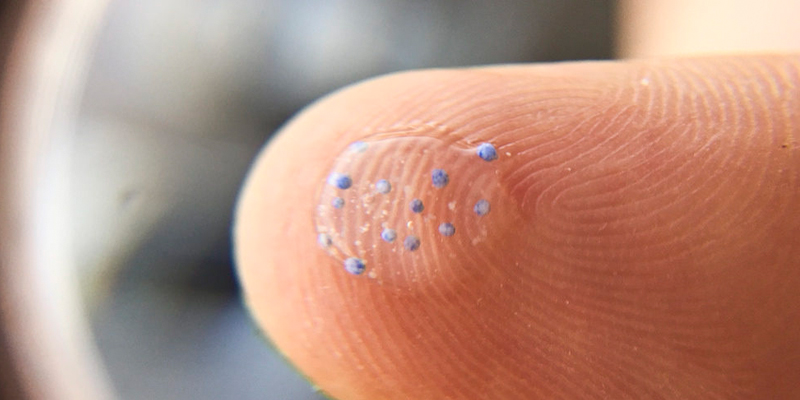In This Section
In The News | Microplastics Found in Remote Areas of Alps and Arctic

A new study has revealed significant levels of microplastic pollution in snow samples from the Arctic to the Alps, prompting scientists to raise the alarm about possible impacts of airborne contamination on human health.
The study, published in the Journal Science Advances, shows that microplastic pollution is becoming prevalent even in remote, mountainous places such as the Arctic. According to the German and Swiss researchers, samples from ice sheets on the ocean between Greenland and Svalbard contained an average of 1,760 microplastic particles per litre.
Scientists also found 24,600 per litre of plastic pollution particles on average in other European areas. The highest concentration– 154,000 particles per litre – was detected near a rural road in Bavaria. The study identified a pattern in which the tiny particles of plastic are transported by the atmosphere to remote distances such as the Alps where snow binds airborne particles with the pollutants that are eventually deposited on Earth’s surface. The data from the study show that this process represents an important pathway of microplastics to land and ocean environments in Europe and the Arctic. The researchers behind the study have called for an investigation into the impacts of microplastic pollution in the atmosphere on human health.
Melanie Bergmann, a marine ecologist who co-led the study, said: "Once we’ve determined that large quantities of microplastic can also be transported by the air, it naturally raises the question as to whether and how much plastic we’re inhaling."
In June, another study revealed that humans consume at least 50,000 microplastic particles every year. Last summer, American researchers also warned that even flushing contact lenses down the toilet is contributing to microplastic pollution in the environment.

Photo: Minnesota Pollution Control Agency
John Sodeau, Professor Emeritus of Physical Chemistry at University College Cork told The Green News that the new findings should alarm researchers and State officials to take extra measures to thwart airborne microplastic pollution from harming our health. Prof Sodeau added that widespread real-time monitoring for airborne contamination may now be necessary. "Recently some instrumental techniques have been developed to quantify asbestos in real-time using laser techniques, but they are not widely used," he said. "However, this might change if [the new study] on the airborne distribution of non-mineral fibres like microplastics is actually found to be a ubiquitous phenomenon with damaging effects on health. It looks like atmospheric research scientists, the EU and national governments are going to have to up their game in developing and deploying instrumentation that can help here,” he added.
As a new study reveals significant microplastic pollution in snow samples from the Arctic to the Alps, Prof @JohnSodeau of @uccchemistry says it is time for EU Governments to start monitoring the atmosphere for contamination: https://t.co/YFHHribS2P
— Shamim Malekmian (@ShamimMalekmian) August 20, 2019
Article Written By Shamim Malekmian. Shamim is a Senior Reporter at The Green News and a contributing writer to the Irish Examiner, Cork Evening Echo and the Dublin Inquirer.
School of Chemistry
Scoil na Ceimic
Contact us
Second Floor, Kane Building, University College Cork, T12 YN60
